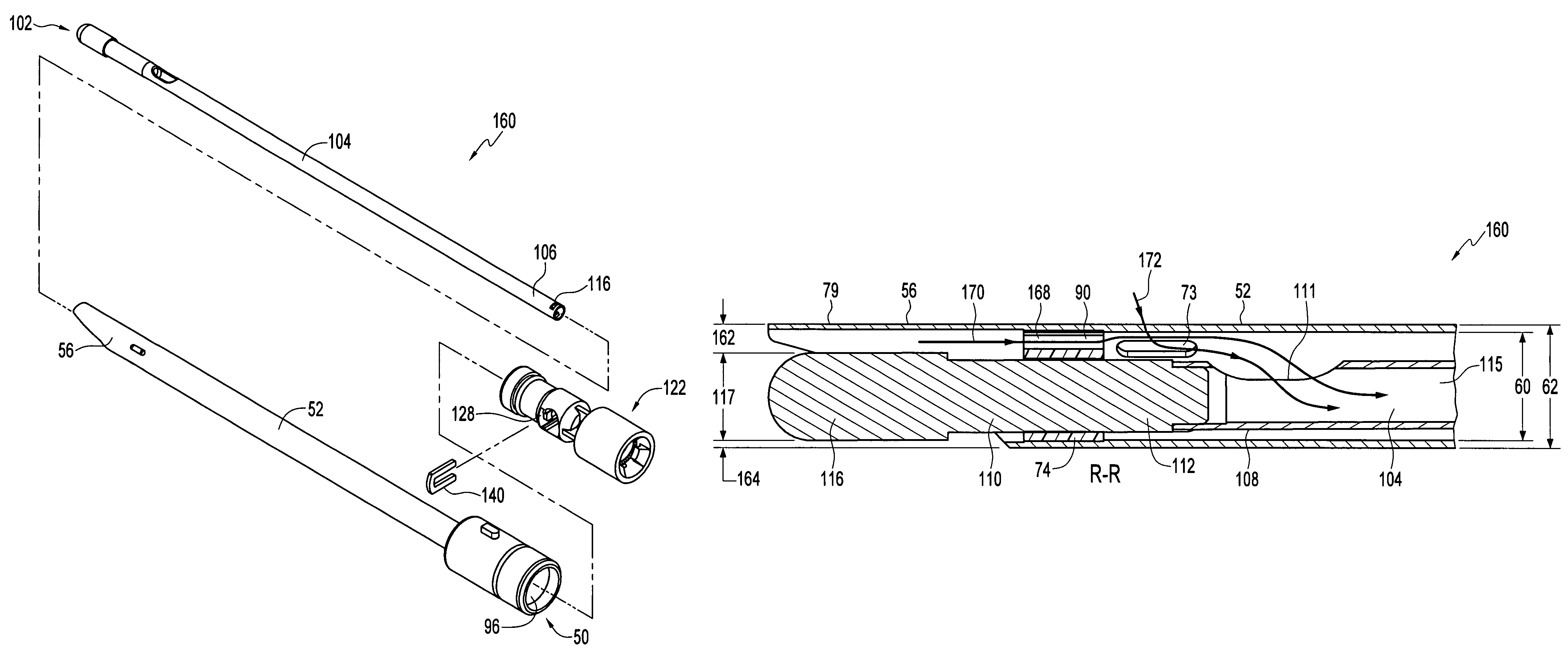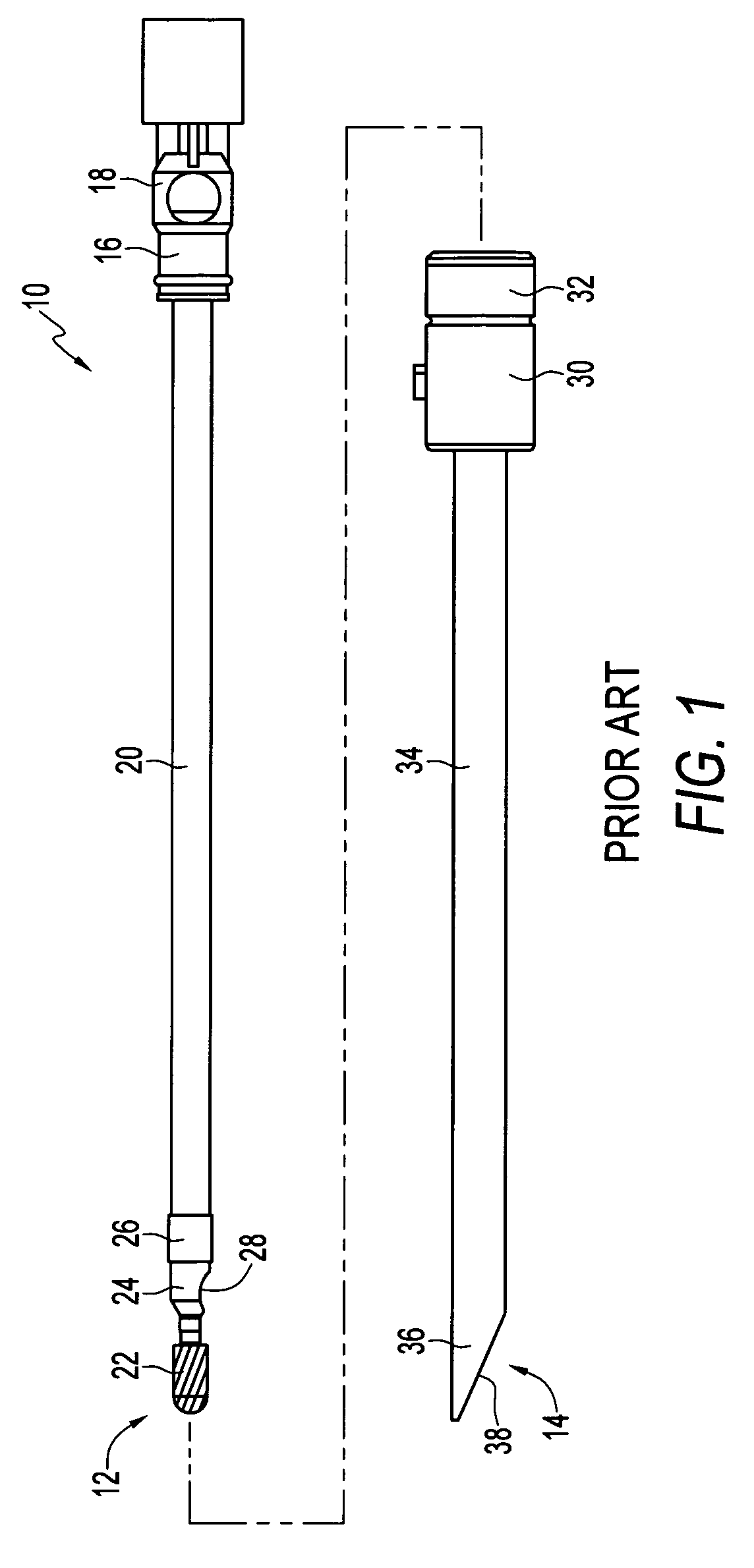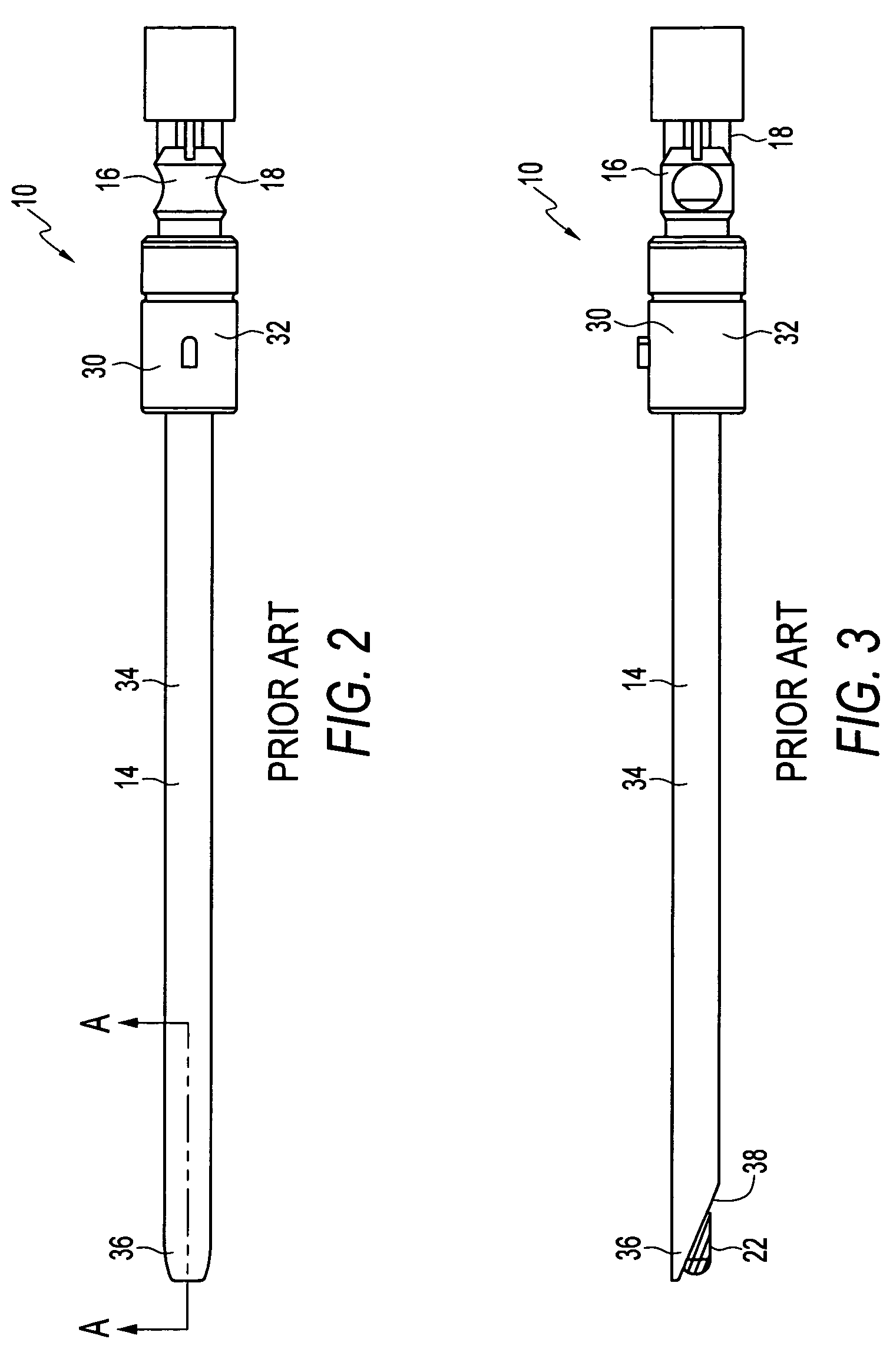Endoscopic rotary abrader
a rotary abrader and endoscope technology, applied in trocar, medical science, surgery, etc., can solve the problems of limiting the surgeon's access to some structures, obscuring the surgeon's view of the site being abraded, and undesirable contact between the burr head and the hood, so as to achieve the effect of increasing the displacement between the center of the outer tube and the center of the inner assembly, increasing the clearance, and reducing the siz
- Summary
- Abstract
- Description
- Claims
- Application Information
AI Technical Summary
Benefits of technology
Problems solved by technology
Method used
Image
Examples
first embodiment
[0103]In the present invention, an inner assembly is rotatably positioned within an outer assembly. The proximal ends of the assemblies form hubs as in the prior art device of FIGS. 1 through 4. The elongated tubular portions of the inner and outer assemblies are not concentric, but rather have the inner tubular portion laterally positioned away from the hood so that required clearance can be maintained between the burr head and the hood while increasing the diameter of the burr head, or decreasing the diameter of the outer tube.
[0104]Referring now to FIGS. 5 through 7, showing the outer tubular portion (outer tube) 52 of the outer assembly 50 (FIG. 10) of a rotary abrader formed in accordance with the first embodiment of the invention, outer tube 52 has a proximal end 54 and a distal end 56. Tube 52 has a lumen 53 of diameter 60 and an outer diameter 62. Distal end 56 has a first portion 64 with an inner diameter 66 formed therein, and a second portion 68 of length 70 with a diamet...
second embodiment
[0117]the present invention avoids this limitation. The distal bearing has a first portion mounted to a first, fixed portion of the outer tube assembly, and a second portion mounted to a second, demountable portion of the outer tube assembly. To assemble the rotary abrader, the demountable portion of the outer tube is removed, the inner assembly with hub permanently attached is positioned within the fixed portion of the outer tube assembly, and the demountable portion of the outer assembly is remounted to the outer assembly. This construction has two advantages: the instrument can be easily disassembled for cleaning between uses, and the tubular portion of the inner assembly can have a larger diameter than the bearing so as to allow better transmission of torque and better aspiration of debris from the site.
[0118]Referring now to FIG. 29 showing an embodiment of the disclosed invention having a two-piece outer tubular assembly, rotary abrader 200 has an inner assembly 350, an outer ...
third embodiment
[0128]In the present invention, the elongated tubular portions of the inner and outer assemblies are concentric, rather than offset, but the burr head is enlarged. The hood is positioned at an angle and enlarged so that the required clearance can be maintained between the enlarged burr head and the hood. As in the previous embodiments, the larger diameter burr is preferably configured so that its cutting edge is aligned with the outer surface of the outer tube to provide a “flush cut.”
[0129]Referring now to FIGS. 60 through 64, showing the outer tubular portion (outer tube) 552 of the outer assembly 550 of a rotary abrader formed in accordance with the third embodiment of the invention, outer tube 552 has a proximal end 554 and a distal end 556. Tube 552 has a lumen 553 of diameter 560 and an outer diameter 562. Distal end 56 has a first portion 564 of length 556 and a second portion 568 of length 570. Three elongated aspiration slots 573, at 120° apart, extend from the lumen 553 to...
PUM
 Login to View More
Login to View More Abstract
Description
Claims
Application Information
 Login to View More
Login to View More - R&D
- Intellectual Property
- Life Sciences
- Materials
- Tech Scout
- Unparalleled Data Quality
- Higher Quality Content
- 60% Fewer Hallucinations
Browse by: Latest US Patents, China's latest patents, Technical Efficacy Thesaurus, Application Domain, Technology Topic, Popular Technical Reports.
© 2025 PatSnap. All rights reserved.Legal|Privacy policy|Modern Slavery Act Transparency Statement|Sitemap|About US| Contact US: help@patsnap.com



